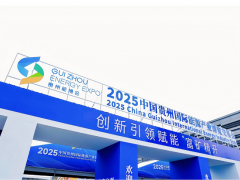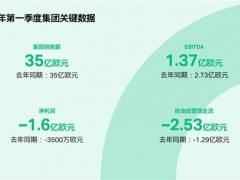????通訊員 據3月2日MENAFN消息:勘探和生產公司(E&P)在過去十年中面臨的連續低迷加速了能源轉型,增加了對綠色能源解決方案日益增長的社會和監管需求。這對全球上游投資組合的彈性構成了壓力。Rystad Energy上游團隊的能源轉型專家已經量化了油價和全球油氣組合凈現值(NPV)變化的長期風險。
????Rystad Energy根據能源多樣化、投資組合彈性和脫碳等因素,對E&P在能源轉型過程中所采取的方式進行了評估。
????長期來看,能源轉型可能給油價帶來的下行風險高達10美元/桶,這意味著如果能源轉型加速,未來油價可能會比之前低10美元/桶。
????到目前為止,油價下跌的風險是決定全球勘探與生產上游投資組合彈性的最大因素,同時也是二氧化碳排放成本上升的潛在因素。Rystad Energy研究了排名前25位的非國有油氣公司的投資組合彈性,發現它們在應對大宗商品價格下降和二氧化碳稅增加的風險方面存在很大差異。
????由于數量(擱淺資產)導致的平均投資組合風險價值通常很低,平均對估值降低的貢獻不到1%,但價格導致的風險價值影響最大,平均降低30%。由于成本(二氧化碳稅)的風險價值對大多數公司來說很低,大多數低于10%。因此,由于能源轉型,一個平均投資組合的凈現值高達30-40%面臨風險。
????能源轉型的風險因各勘探開發公司而異。Rystad Energy的上游研究負責人Espen Erlingsen表示,與其他同行相比,挪威國家石油公司的風險相對較小,如果油價每桶下跌10美元并征收二氧化碳稅,該公司的上游投資組合價值可能會減少218億美元,降幅近30%。
????不同公司之間的價格風險存在較大跨度。對于有些公司來說,當油價長期下跌10美元/桶時,其價值就會下降50%左右。價格風險較大的公司通常是油砂公司或頁巖/致密油公司。
????這些公司受影響最大的原因是,它們的投資組合通常包括盈虧平衡價格較高的資產。與此相反,由于價格風險在20-25%的范圍內,大多數石油巨頭的價值都會下降。成熟的資產和高含氣量有助于降低這些公司的風險。
????當涉及到二氧化碳相關成本時,一些公司以高價值脫穎而出。油砂公司的成本風險最高,以二氧化碳稅每噸100美元為例,會導致其投資組合價值下降約30%。
????埃尼、殼牌、挪威國家石油公司和道達爾的風險值都非常相似,風險值適中。埃克森美孚的收入風險高于其他同行,主要是因為它的投資組合包括幾個大型資本密集型項目,如二疊紀致密油和圭亞那資產。
????對于油砂和頁巖/致密油等利潤較低的項目,生產商通常會在收入和成本方面受到影響。這其中的關鍵原因是這些項目的盈利能力對價格和成本的變化非常敏感。另外,油砂項目通常具有較高的二氧化碳排放量,這增加了其成本風險。
????馮娟 摘譯自 MENAFN
????原文如下:
????Energy Transition Could Cut Oil Prices By $10 Per Barrel
????The back-to-back downturns that exploration and production companies (E&Ps) have faced during the past decade have accelerated the energy transition, adding to growing social and regulatory demands for greener energy solutions. This is putting the resilience of global upstream portfolios under pressure. Energy transition experts on Rystad Energy's upstream team have now quantified the long-term risk of this change to oil prices and to the net present value (NPV) of global oil and gas portfolios.
????In an analysis marathon that has generated a series of three commentaries and a report to its clients, Rystad Energy has assessed the way E&Ps are navigating the energy transition, based on energy diversification, portfolio resilience and decarbonization. While the full in-depth findings are not going to be made public outside our client portal, in this press release we are offering a glimpse of our portfolio resilience findings.
????The downside risk that the energy transition can bring to oil prices is calculated to as much as $10 per barrel in the long term, meaning oil prices could end up $10 lower in the future than they otherwise would if the transition to cleaner energy speeds up.
????This oil price downside risk is by far the biggest factor in determining the resilience of global E&P upstream portfolios, along with the potential for rising costs for emitting carbon dioxide. Rystad Energy has studied the portfolio resilience of the top 25 non-national oil and gas companies and found big differences in how robust they are to the risks of lower commodity prices and increased CO2 taxes.
????While the average portfolio value at risk due to volume (stranded assets) is normally very low, on average contributing less than 1% to the reduction in valuation, the value at risk due to price has the largest impact, contributing to an average reduction of 30%. The value at risk due to cost (CO2 tax) is low for most companies, mostly below 10%. As a result, up to 30-40% of the net present value of an average portfolio is at risk as a result of the energy transition.
????'The energy transition risks vary depending on each individual E&P company. Equinor, for example, whose risk is relatively smaller compared to other peers, could see the value of its upstream portfolio reduced by $21.8 billion, almost 30%, with an oil price decrease of $10 per barrel and a CO2 tax,' says Espen Erlingsen, head of upstream research at Rystad Energy.
????There is a large span for the price risk among the different companies. For some companies the value is reduced by around 50% when the long-term oil price falls by $10 per barrel. Companies with a large price risk are typically oil sands companies or shale/tight oil companies.
????The reason these companies are most affected is that their portfolios normally include assets with high breakeven prices. On the opposite side of the scale, most majors have a reduction in value due to price risk in the range of 20-25%. Mature assets and high gas content help reduce the risk for these companies.
????When it comes CO2-related costs, some companies stand out with a high value. Oil sands companies have the highest cost risk, causing the value of their portfolio to decrease by around 30% in an example of a CO2 tax of $100 per tonne.
????Eni, Shell, Equinor and Total all have very similar scores with modest value at risk. ExxonMobil has a higher revenue risk than its peers, primarily because its portfolio includes several large, capital-intensive projects such as Permian tight oil and its Guyana assets.
????Producers with less profitable projects, like oil sands and shale/tight oil, are typically punished both along the revenue and cost dimensions. The key reason for this is that the profitability of these projects is very sensitive to price and cost changes. In addition, oil sands projects normally have high CO2 emissions, which increases their cost risk.







